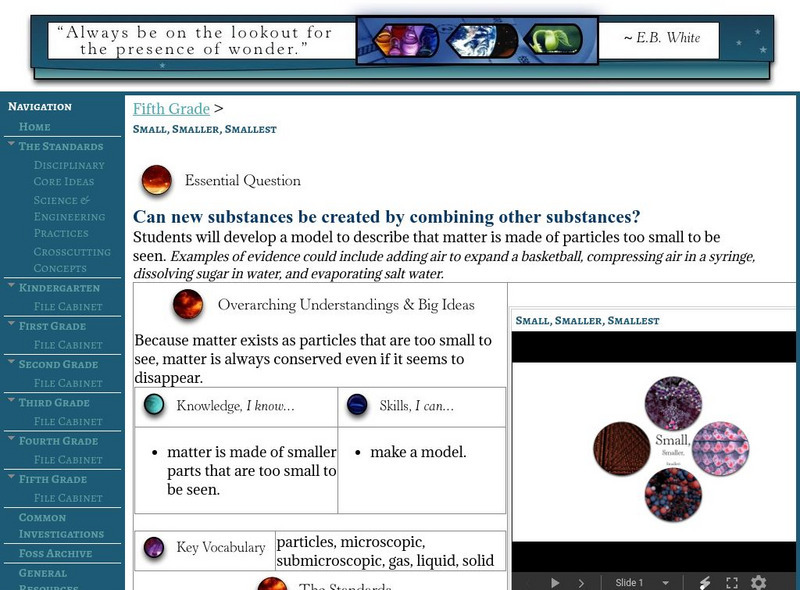Curated OER
Oobleck
Students explore "matter." In this literacy and three states of matter lesson, students listen to Bartholomew and the Oobleck by Dr. Seuss, then work in groups to explore "oobleck" (cornstarch and water mixture) with their five senses....
Curated OER
Adhesives: Measuring Stickiness
Learners test the stickiness of natural substances. In this adhesion as a property of matter lesson, students build a tool to test the adhesion of natural "glues" such as honey, peanut butter, flour and water paste, and jelly. Learners...
Study Stack
Earth Science Crossword Puzzle
In this online interactive anatomy crossword puzzle activity, students use the 8 clues to find the appropriate answers to complete the word puzzle.
Curated OER
Phases of Matter
Students comprehend the different phases of matter. They give examples of each phase and describe the processes of changing between these phases. Students are asked what is plasma? They are asked what is the four phases of matter? ...
University of Colorado
University of Colorado: Ph Et Interactive Simulations: Davisson Germer
Simulate the original experiment that proved that electrons can behave as waves. Watch electrons diffract off a crystal of atoms, interfering with themselves to create peaks and troughs of probability. Java required.
McCracken County Schools
Mc Cracken County Schools: Structure and Properties of Matter
This expansive unit created by McCracken County Schools focuses on the properties of matter. Multiple lessons focus on the concept of scientific modeling of matter particles. Included in this unit are various activities to reach all...
University of California
Ucsb Chemistry and Biochemistry: Models Matter
Matter of any type can be subdivided into particles that are too small to see, but even then the matter still exists and can be detected by other means. Students will participate in hands-on activities to prove that matter is made up of...
Physics Classroom
The Physics Classroom: The Strucure of Matter
This interactive tutorial begins with an understanding of the structure of matter. Understanding charge as a fundamental quantity demands that we have an understanding of the structure of an atom. Learn the atomic structure of an atom an...
CK-12 Foundation
Ck 12: Fifth Grade Science: Physical Science: Types of Matter
[Free Registration/Login may be required to access all resource tools.] Discusses elements, atoms, compounds, molecules, and crystals. Looks at mixture and different types of them.
CK-12 Foundation
Ck 12: Fifth Grade Science: Physical Science: Matter, Mass, and Volume
This learning module discusses the definition of matter and what mass and volume measure. Module includes pictures, videos, and review questions.
PBS
Pbs Learning Media: The Ruff Ruffman Show: Rainbow Popsicle
Explore kitchen chemistry and make a cool rainbow popsicle.
PBS
Pbs Learning Media: The Ruff Ruffman Show: Ruff's Cookie Creator
Use science inquiry to explore and test different ingredients to help Ruff make, decorate, and serve cookies to his family in this kitchen science game.
PBS
Pbs Learning Media: The Ruff Ruffman Show: Teacher's Guide: Kitchen Chemistry
Learn about kitchen chemistry alongside Ruff Ruffman. Students can use the videos, games, and activities from The Ruff Ruffman Show to discover how by investigating solids and liquids and exploring heating and cooling, science can help...
National Academies of Sciences, Engineering, and Medicine
National Academies Press: Small, Smaller, Smallest
View these slides to better understand that matter is made of smaller parts that are too small to be seen. These slides can be used to meet math, science, and literacy standards.








